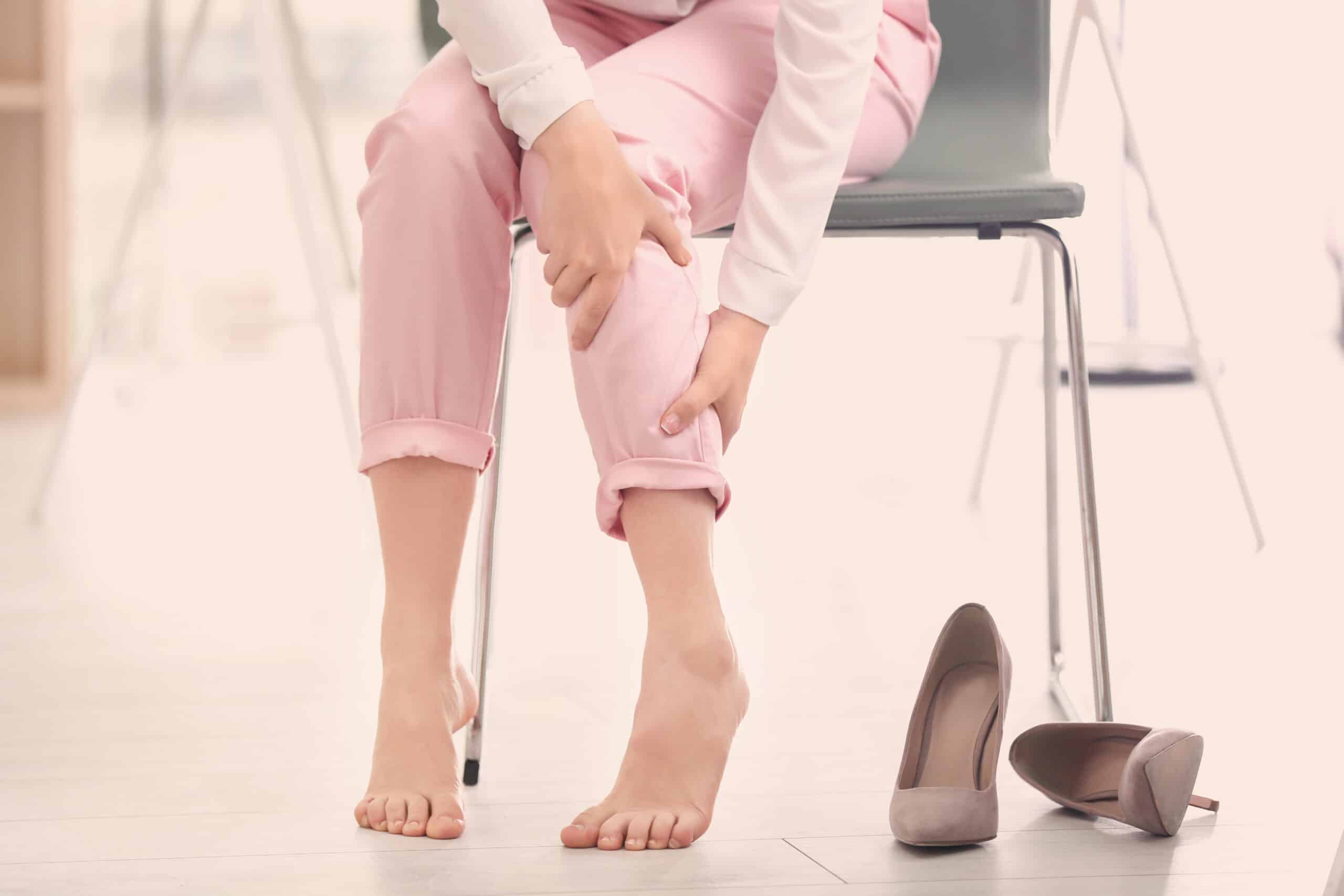Venous reflux is a common condition that mainly affects your lower limbs. Read on to learn everything you need to know about venous reflux and…
What Is Venous Reflux? Symptoms, Causes & Treatment

Venous reflux is a common condition that mainly affects your lower limbs. Read on to learn everything you need to know about venous reflux and its causes, symptoms, stages, treatments, and more.
What Is Venous Reflux?
Venous reflux is a condition in which the blood in your legs doesn’t flow well due to various reasons like the valves not closing properly or the presence of a blockage.1
This causes all the blood to collect in your legs due to the force of gravity, and this blood cannot return to the heart for proper circulation. The pooled blood causes tremendous pressure in your veins, resulting in a host of symptoms and complications.2
What Are the Stages of Venous Reflux?
Venous reflux is categorized into seven stages, from 0 to 6. This staging is based on your clinical signs and symptoms, which are observed by a vein specialist during a medical exam.
To give you a clearer picture, here’s a brief summary of what each stage involves:3
- Stage 0: No visible signs, but you may have symptoms like aching or tiredness in your legs.
- Stage 1: Small blood vessels like spider veins are visible in your legs.
- Stage 2: You have varicose veins that are at least 3 millimeters wide.
- Stage 3: Your legs are swollen, but the skin is normal.
- Stage 4: Your leg skin shows changes in color and/or texture.
- Stage 5: Your legs have healed ulcers.
- Stage 6: Your legs have active ulcers.
If you’re below stage 3, you’re considered to have varicose veins. But if you’re at stage 3 or above, you’ll be considered as having chronic venous insufficiency. Essentially, an escalation of varicose veins results in chronic venous insufficiency.
What Are the Causes and Symptoms of Venous Reflux?
Now that we’ve clarified how venous reflux is classified, let’s discuss the crux of this issue, which are the causes of the condition. They can be grouped into three main types:4
- Congenital: This means that you’re born with malformations or defects (e.g., absent vein valves) that cause venous reflux.
- Primary: This includes changes occurring in your leg veins that prevent their normal function.
- Secondary: This includes other medical conditions like deep vein thrombosis that can result in venous reflux.
You may have venous reflux if you’ve been experiencing any of the following symptoms:5
- Swelling in your legs, ankles, or feet
- Tired or aching legs
- Leg cramps at night
- Burning, tingling (or pins and needles) sensation in your lower limbs
- Skin discoloration (appearing reddish brown or bluish purple)
- Flaking, itchy, or leathery skin on your legs
- A feeling of fullness or heaviness in your lower limbs
- Leg ulcers or infection
- Varicose veins (twisted, bulging veins)
What Is the Treatment for Venous Reflux?
The main goal of venous reflux treatment is to improve venous blood flow, decrease signs and symptoms, and improve quality of life. This can be achieved in the following ways.
Lifestyle changes
Some small but effective lifestyle changes you can consider incorporating into your daily routine include regular exercise, weight management, and leg elevation for at least 30 minutes three times a day.6
Compression therapy
Compression therapy mainly involves wearing tight stockings and/or inflatable sleeves (IPC devices) to relieve the pain and swelling in your legs.7
Medications
Some medications for treating your symptoms of venous reflux include antibiotics for ulcers and anticoagulants (blood thinners) to prevent blood clots.8
Non-surgical treatment
The most popular minimally invasive treatments for relieving varicose veins include microfoam sclerotherapy, cyanoacrylate (VenaSeal), heat ablation (EVLT and RFA), and phlebectomy.9
Surgical treatments like vein stripping are no longer recommended for varicose veins. Speak to your local vein specialist regarding the risk factors that increase your chances of developing venous reflux insufficiency. Taking precautions ahead of time is more beneficial than having to combat and control an active disease.
Visit My Vein Treatment today for interesting updates as well as useful tips and tricks related to various vein-related conditions. You can also check out our locator tool, which can be used to recommend a vein specialist near you or to help you find answers regarding available vein treatments.
SOURCES:
- Johns Hopkins Medicine: “Chronic Venous Insufficiency.”
- Johns Hopkins Medicine: “Chronic Venous Insufficiency.”
- Cleveland Clinic: “Chronic Venous Insufficiency (CVI).”
- Medical News Today: “What to know about venous reflux disease.”
- Healthline: “Venous Insufficiency.”
- Cleveland Clinic: “Chronic Venous Insufficiency (CVI).”
- Cleveland Clinic: “Chronic Venous Insufficiency (CVI).”
- Cleveland Clinic: “Chronic Venous Insufficiency (CVI).”
- Harvard Health Publishing: “Minimally invasive treatments for bothersome leg veins.”





